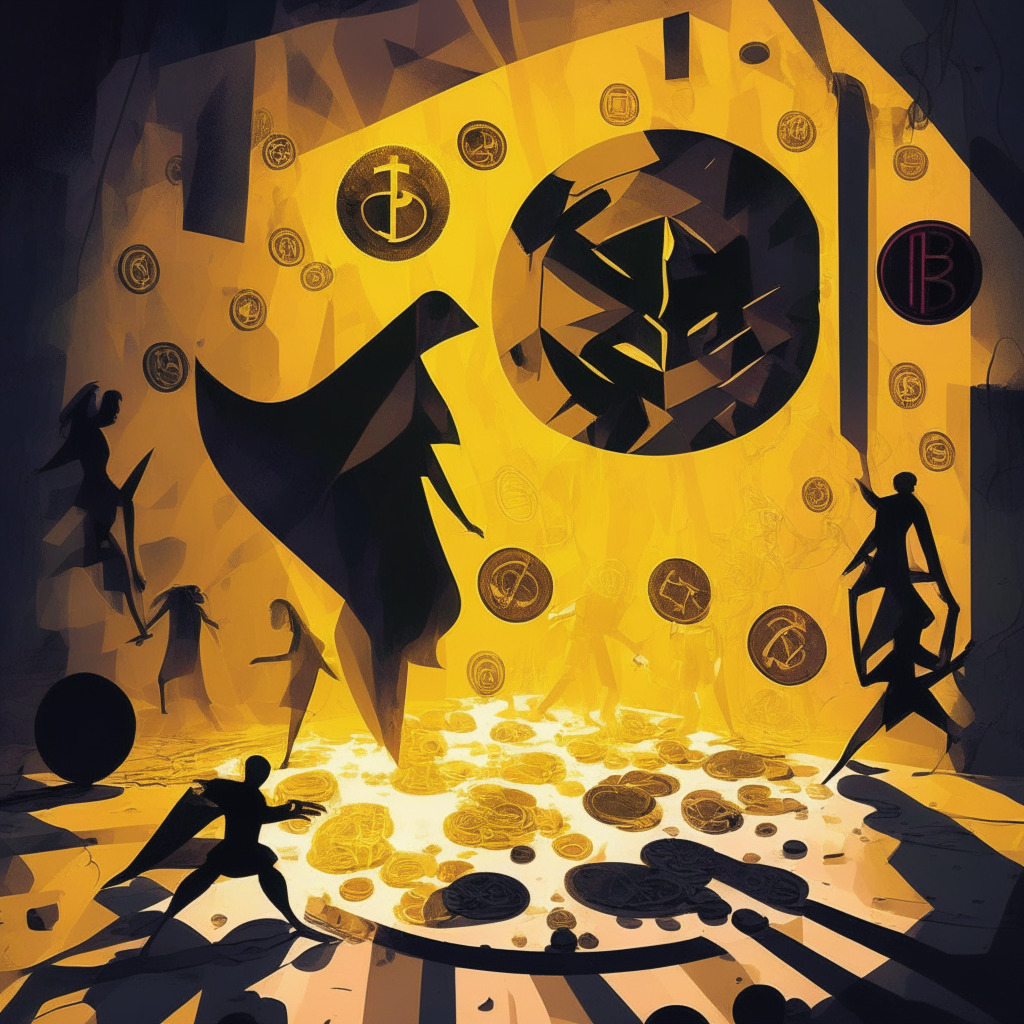A fascinating new study from economists at the Federal Reserve Bank of Chicago argues on an optimistic note, suggesting the era of economic tightening might have achieved its goal. Their assessment hints that the rate increases implemented since March 2022 have led to a potential soft landing, efficiently guiding inflation towards the 2% mark, thereby negating the necessity for more tightening.
This argument paints a comfortable picture, one that holds the promise of a vibrant and risk-ready global market buoyed by a managed inflation rate sans the economic slump. This scenario is especially noteworthy for cryptocurrencies, that are tipped for a favorable phase in their market performance, known among financial circles as a “goldilocks moment”.
However, let’s not uncork that champagne just yet. This analysis by Stefania D’Amico and Thomas King is based on a Vector Autoregression (VAR) model. According to their calculations, rate hikes have definitively impacted the economic output, but their theory points towards an eventual control over prices. Herein lies an interesting divergence, this projected control on prices seems to have averted a predicted market crash, largely attributed to last year’s crypto market volatility due to the tightening cycle.
Now, the VAR model anticipates a significant fall in the headline consumer price index to approximately 2.3% by mid-2024. A percentage that equates to the desired 2% inflation rate by the personal consumption expenditure (PCE) price index. D’Amico and King seem confident that this level is in harmony with the Fed‘s policy of balancing maximum employment with price stability.
Contrastingly, a sizeable section of the vast, unpredictable global market expresses unease about the sudden crash in CPI, falling from a peak of 9% to 3% in recent months. This apprehension is fuelled by the resurgence of oil and food prices, coupled with the trough in manufacturing and service sector prices.
This challenging scenario has led to various conjectures from multiple investment banks, suggesting an impending cessation of rate increase cycles, concurrently predicting rates would maintain this elevated level for a longer duration than previously assumed.
Simultaneously, the VAR model propounds a strong expectations channel along with a robust monetary policy. As per D’Amico and King, these developments not only fast-track the effects but also enhance their magnitude, making them more influential than typical estimates. It subtly implies that the forthcoming impacts, substantial as they may be, can efficiently rein in the inflation rate reasonably quickly. Still, one could think, this optimistic hypothesis from the Fed might warrant some healthy skepticism, considering the mercurial nature of global markets.
Source: Coindesk




